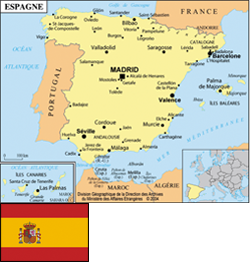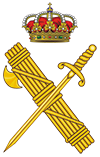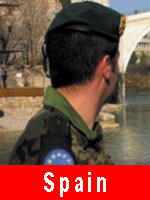
Civil Guard
|
1844 Ministry of attachment: Ministère de la Défense et ministère de l’Intérieur Workforce: 79 547 General manager: Mr José Manuel Holgado Merino Address: Dirección General de la Guardia Civil - Calle Guzmán el Bueno, 110 Tél.: (+34) 915 146 000 ou (+34) 900 101 062 Fax: (+34) 900 102 062 Email: secdirector@guardiacivil.org Website: www.guardiacivil.es 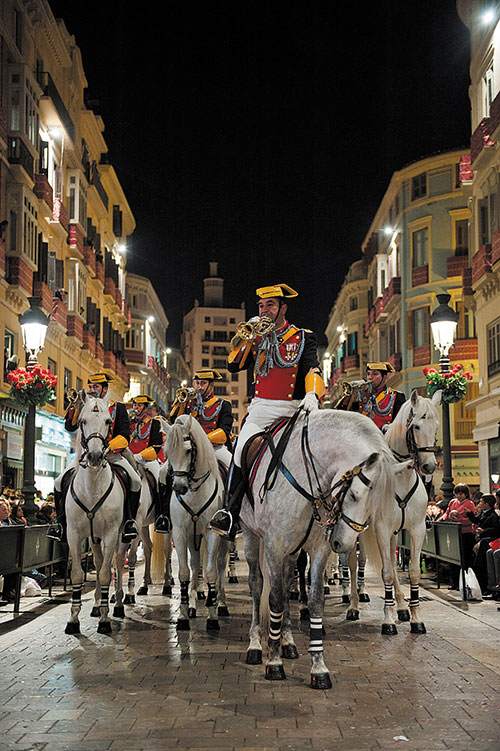
|
History
Established in 1844, under the reign of Isabelle II, the Spanish Civil guard has counted on the support of González Bravo’s moderate government. It constituted with the consensus of the other political strengths aware of the need for the Spanish liberal State to have a public security force to cover all of the peninsular territory. It was also a question of facing alarming situation of insecurity generated by the crime, an expanding phenomenon since the Napoleonic period. At that time, duke Ahumada II, Fransisco Javier Girón y Ezpeleta, president of the government general Narváez’Ho’s right-hand man, is inspired by the model established in France with the gendarmerie in order to set up this new body, the first one in Spain at the national level. The decree of April 15th, 1844 charges the war ministry for its organization. Queen Isabelle II gives it the name of Civil guard (Guardia Civil). The decree of May 13th, 1844 formalizes the principles of its organization. The decree of January 16th, 1845 establishes a moral code, contained in the Cartilla del Guardia Civil, which defines the condition of the civil guard as military professional serviceman for the benefit of the society by vocation.
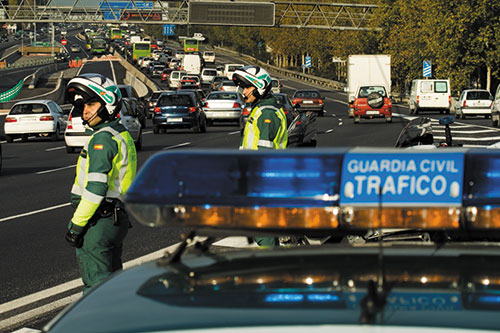
The principles defended by the Civil guard – strong discipline (disciplina), capacity of sacrifice (sacrificio) and spirit worthy of esteem (espiritu benemérito) – earned it the nickname of Benemérita, becoming his official name since October 4th, 1929, Year in which the Civil Guard obtains the “Big Cross of the Charity” Order. Since February 8th, 1913 (order signed by the king Alphonse XIII), the Civil guard Patron saint is the Virgin of the Pillar (Virgen del Pilar), celebrated every year on October 12th in the units. The Civil guard model was exported overseas, in Cuba in 1891, in Philippines in 1897, in Morocco in 1912 and in Spanish Guinea in 1963. The body participated in the Spanish-American war of 1898. At the outbreak of civil war between 1936 and 1939, the Civil Guard is divided itself between the republican camp and the pro-Franco camp. In 1939, the Civil guard absorbs the former body of the ‘carabineers’ - police-customs officers - with its fiscal and customs missions. The organic law of March 13th, 1986 defines the Civil guard as a "military nature armed institution". Its organisation is regulated by the Presidency Order PRE/422/2015 of March 15th, 2013 modified by the Presidency Order PRE/8752014, of May 23rd, 2014. This document fixes the new structure of the Civil Guard Head office central organs new structure.
Organization
• Attachment with the Ministry of the Interior: Public security services, pay, assignment, barracks and equipment.
• Attachment with the Ministry of Defence: promotions, staff situation and military character missions. Direct attachment & incorporation with this ministry in case of war, during the state of siege and for the fulfilment of the missions of military character.
• Joint attachment with both ministries: recruitment, training, improvement, armament and territorial deployment.
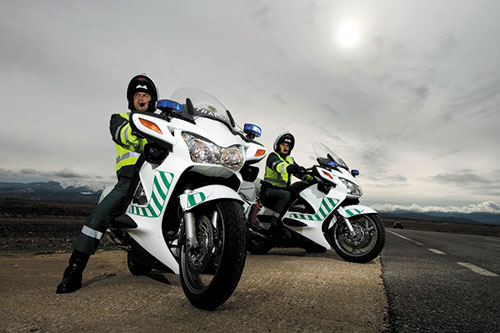
Central Organization
Are directly connected with the chief Executive Officer: the technical Cabinet (Rank of general division), the legal advisor and the particular secretary.
The Executive management is organized, at the central level, in three organs having rank of general division:
• The operational deputy Direction;
• The staff general Division;
• The Support/finances general division.
Are connected with the operational deputy direction:
• The Operations Command;
• The international cooperation secretariat;
• The weapons and explosives Central Service;
• The internal affairs and the Special intervention unit Service.
Having rank of general division, the Operation Command includes numerous units and services among which all the said peripherals units of the Corps (zones, squads, companies and brigades).
The General Division of the staff includes 4 entities:
• The Staff Division;
• The training Division;
• The support for the staff Division;
• The permanent secretarial department for the classification and the evaluation.
The Support/finances general division includes 3 divisions: logistics, technique and finances.
Territorial organization
The Spanish civil guard is competent on 84 % of the national territory and 35 % of the population. It is organized in:
• 17 regions (zonas, 1 by autonomous community);
• 54 groupings (comandancias, 1 by province);
• 221 companies (compañías);
• 1 969 brigades (puestos).
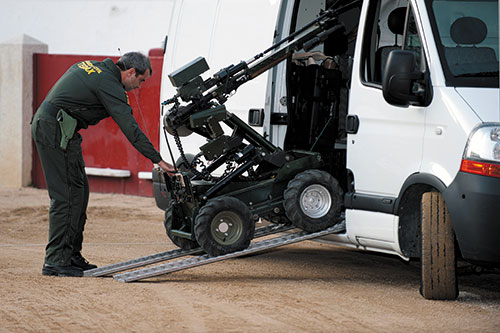
Specialized Training
• The reserve security group, Grupo de Reserva y Seguridad (GRS), specialized in the maintenance of law and order.
• The dog unit, Servicio Cinológico.
• The quick action group, Grupo de Acción Rápida (GAR), specialized in the counter-terrorism, based in the Basque Country.
• The Intervention Special unit, Unidad Especial de Intervención (UEI), equivalent of the French GIGN.
• The civil guard Air service, Servicio Aéreo (SAER).
• The maritime department of the Civil Guard, Servicio Marítimo (SEMAR), specialized, among others functions, in the maritime surveillance, the fight against the smuggling and the illegal immigration, the maritime environmental protection and the inspection of fishing boats.
• The underwater activities special group, Grupo Especial de Actividades Subacuáticas (GEAS).
• Fiscal and Borders Command, Jefatura Fiscal it of Fronteras.
• The central operational unit, Unidad Central Operativa (UCO), branch of the Criminal Investigation Department specialized in the complex investigations or at national level.
• Mine clearance experts, Técnicos Especialistas in Desactivación of Artefactos Explosivos (TEDAX)
• The "road and Traffic Safety" units command (Agrupación de Tráfico). With a force of 10.000 men and women, this unit has the exclusivity of the "Road and Traffic Safety"; it has a national competence; it is connected with the Home Office (Budget and command aside) "Road and Traffic Safety" general direction.
• The mountain rescue and caving emergency service (speleology), Servicio de Montaña (GREIM).
• The environmental protection Service, Servicio de Protección de la Naturaleza (SEPRONA).
• The Civil Guard Intelligence Service, Civil Servicio de Información de la Guardia (SIGC).

Missions
The general missions are performed on the whole national territory and of its maritime influences, with the exception of province capitals and municipalities of more than 20.000 inhabitants and what the government determines. The Civil guard watches the execution of the laws, help and protect the people and the properties, which are in danger, watch and protect the public buildings. It maintains the protection and the security of the high personalities, the preservation or the restoring of the law and order, prevention of reprehensible acts commission and investigations on the committed offences.
The exclusively borne missions concern the following domains:
• Control of weapons and explosives;
• Customs missions in the customs influences of the competence of the Civil guard, the fight against the smuggling;
• Surveillance and security on the traffic interurban axes, control of the land communication routes, coast, borders, ports, airports as well as centres and sensitive installations;
• Nature and environment protection;
• Interurban transfers of the prisoners.
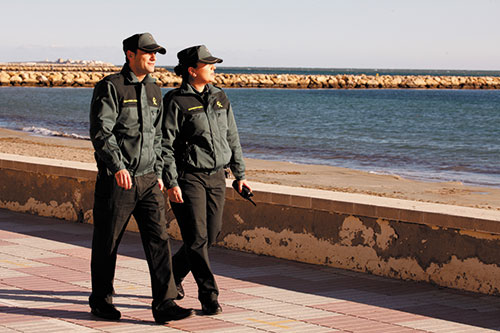
Staff
The Civil Guard has 97.547 staffs among whom approximately 6,39% are women1. The first Civil Guard women integrated this corps on September 1st, 1988. The first female officer went out of the academy with the rank of lieutenant in 1998. There is no more call to the contingent since 1996 (Compulsory military service). The Civil guard’s condition is obtained once finalized the initial training (validation of all the tests planned to the program of education) dispensed by the training centre corresponding to the first considered rank. The access in initial training centres is made, as the case may be, through a competition (constitution of a file according to required criteria + bonuses according to detained diplomas), of an examination (general conditions to appear + written/practical tests) or of a system of selection mixing both. The initial conditions to be bring together in order to be able to apply for are the following ones: to possess the Spanish nationality, to have no criminal record, be over 18 years and not exceed the established age limits. The staff divides up into miscellaneous "Units" (escalas) according to the school/university level required for the integration in each of these Groups: the officer corps (direct recruitment, semi-direct recruitment, coming up from the rank recruitment), non-commissioned officers corps, corporal corps and guards.
Training institutions
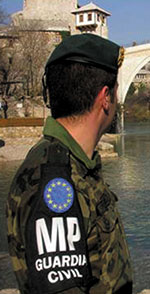 Three training centres within which the necessary conditions are acquired in order to integrate the respective Groups:
Three training centres within which the necessary conditions are acquired in order to integrate the respective Groups:
• Non-commissioned officers and guard Training Centre;
• Officer Training School;
• Young guards Training Centre (Colegio de Guardias Jóvenes).
The staffs reaching directly the Officer Corps (Direct recruitment) also do a training course to the military general academy of the Army (in Saragossa).
Five centres of specialization in which the knowledge are necessary to join the diverse specialized services:
• Special trainings centres;
• Automobile driving school;
• School of specialization (grouping diverse specialist training within it);
• Mountain specialized training centre;
• School of road traffic units.
Main equipment
• Armament: Beretta 92 FS, HK USP, STAR 30M, STAR M-243 FIRESTAR PLUS, revolver ASTRA 357 Magnum and GLOCK 17 for handguns/HK G36, CETME mod. LC in 5,56 mm and CETME mod. C in 7,62 mm for assault rifles/HK MP5 and STAR mod. Z-70-B for submachine guns.
• Horse units (squadron of cavalry).
• Light Vehicles and SUV: Citroen, Peugeot, Ford, Renault, Nissan, Toyota, Seat makes; motorcycles, to underline, BMW R1200RT for the "Road and Traffic Safety", Yamaha for the "cross-country".
• Aerials means: helicopters (MBB-BO 105, MBB-Kawasaki BK117, EC 135) and airplanes (ACCOMMODATED CN 235).

• Nautical means: 3 oceanic patrol boats (patrollers) (between 50 and 73 m) of which the Rio Segura, about twenty deep-sea patrol boats (between 23 and 30 m), 43 patrol boats (between 16 and 21 m), 53 stiff boats/semi-rigid boats (between 8 and 12 m). Big diversity of marks (ex: Astilleros Gondàn) according to the year, of the boat hull (neoprene, aluminium, PVRC, steel), motorization, etc.
• Specialized equipment: ammunitions, specific materials & equipment (for the specialized intervention, the exercise of the Criminal Investigation missions and technical and scientific police, of intelligence, road safety, maintenance of law and order, detection/neutralization/ deactivation of explosives and defence NRBC, basement reconnaissance, etc.). Video, photographic and computing diverse equipment.
Cooperation
One of the permanent objectives of the civil guard is to strengthen its capacities of international cooperation through the mechanisms of collaboration with the other countries police/gendarmerie strength, the institutions and the international organizations/agencies.
Considering its capacities, the Civil guard is deployed within international missions under UNO, NATO and EU mandates. It also participates in numerous forums and initiatives on diverse themes and maintains a close collaboration with EUROPOL and INTERPOL.
Within the framework of the cooperation with France, the civil guard is a member of the FIEP, association joined by France, Italy, Portugal, Turkey, Morocco, the Netherlands and Romania "gendarmiques" strengths. It is also a part of the European Gendarmerie Strength (FGE), beside other "gendarmiques" strength (France, the Netherlands, Italy, Portugal and Romania).
The constitution of the Police and Customs Cooperation Centres (PCCC) with France, Portugal and Morocco also deserves to be quoted within the framework of the police cooperation regarding information/intelligence exchanges related to the cross-border criminality, the illicit traffics, the irregular immigration and the law and order.
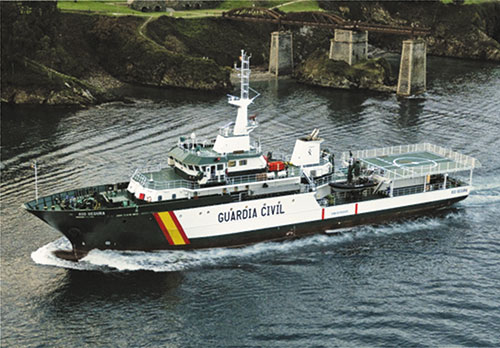
© The iconography was provided by the concerned gendarmeries
1 Dissertation of the RSC GC 2016.

